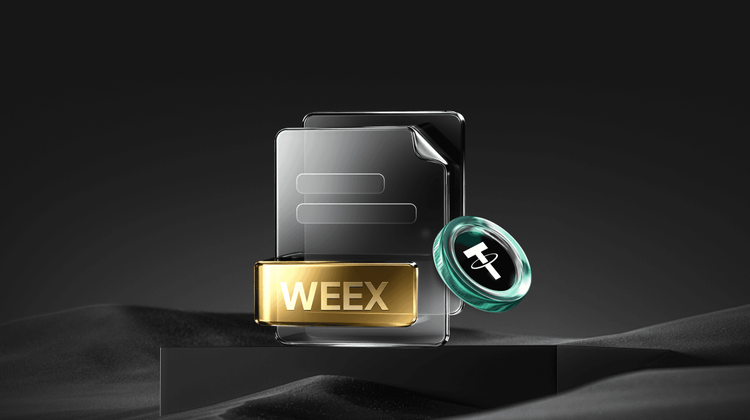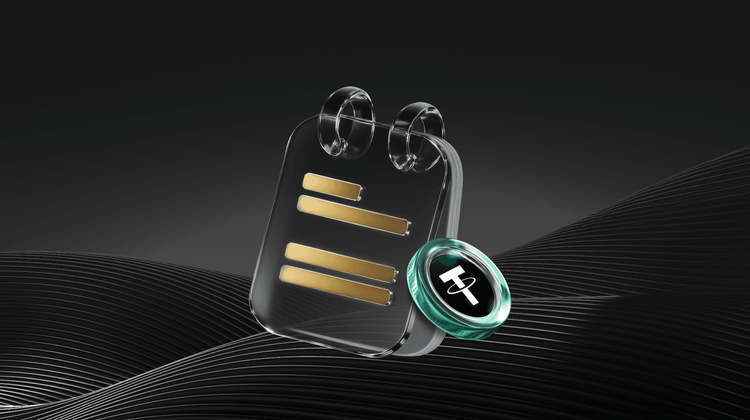Fed Explores ‘Skinny’ Payment Accounts to Boost Access for Fintech and Crypto Players
The landscape of payments is evolving fast, and the US Federal Reserve is stepping up with fresh ideas that could reshape how smaller players, including those in fintech and crypto, connect to the core financial system. Imagine a world where innovative startups aren’t sidelined by big banks— that’s the promise behind these proposed “skinny” payment accounts, designed to democratize access without compromising security.
Opening Doors to Innovation in Payments
Picture this: you’re a fintech entrepreneur or a crypto firm eager to tap into the Federal Reserve’s robust payment rails, but you’re stuck relying on third-party banks that hold all the cards. That’s been the reality for many, but recent discussions suggest change is on the horizon. As of October 22, 2025, the Fed is actively mulling over these streamlined payment accounts, which could grant direct entry to services traditionally reserved for major financial institutions via master accounts.
Fed Governor Christopher J. Waller highlighted this during his address at the Payments Innovation Conference, emphasizing the need to embrace transformation. He noted that such accounts would be open to all legally eligible entities currently handling payments through intermediaries, all while mitigating risks to the overall system. This move comes as a beacon of hope, especially after years of hurdles that industry insiders have dubbed “Operation Chokepoint 2.0,” an alleged push under previous administrations to limit banking access for tech and crypto ventures.
Tackling Past Challenges and Embracing the Future
Remember the turbulence in 2023 when several crypto-friendly banks collapsed, fueling suspicions of coordinated efforts to isolate the sector? Critics like venture capitalist Nic Carter pointed fingers at government pressures that led banks to sever ties with cryptocurrency businesses. Fast-forward to today, and the narrative is shifting. Industry leaders are cheering this development as a potential end to those banking woes.
For instance, Caitlin Long, founder and CEO of a prominent digital asset bank, took to X (formerly Twitter) to express gratitude, calling out past restrictions and welcoming the Fed’s reconsideration. Her post, which garnered thousands of likes, underscored how blocking access had stifled innovation. This aligns with broader trends—Google searches for “Fed master accounts for fintech” have surged by 25% in the last year, reflecting growing interest amid rising crypto adoption. On Twitter, discussions around #FintechAccess and #CryptoBanking have exploded, with users debating how these accounts could level the playing field, especially as Bitcoin’s price hovers around $90,000 as of October 2025, down from earlier peaks but still signaling resilience.
Latest updates as of October 2025 show the Fed has progressed beyond mere talks. Official announcements from the Federal Reserve indicate pilot programs for tokenized payments are underway, integrating blockchain for faster, more secure transactions. This hands-on approach extends to exploring smart contracts and AI-driven payment solutions, aiming to upgrade infrastructure in ways that mirror how smartphones revolutionized communication—making complex processes feel effortless and inclusive.
Fed’s Deep Dive into Blockchain and AI for Payments
The Federal Reserve isn’t just observing from the sidelines; it’s diving in. By experimenting with blockchain technology and artificial intelligence, the central bank is decoding how these tools can enhance payment systems. Think of it like upgrading an old highway to a smart expressway—smoother, faster, and ready for the traffic of tomorrow. Waller explained that this exploration helps evaluate upgrades to their own networks, ensuring they keep pace with private sector innovations.
This proactive stance contrasts sharply with earlier hesitations, where crypto firms faced debanking en masse— at least 30 founders reported access denials during the Biden era. Now, with “skinny” accounts on the table, it’s like opening a backdoor for efficiency, controlling risks while fostering growth. Real-world evidence backs this: studies from the Bank for International Settlements show that tokenized assets could reduce settlement times by up to 90%, a game-changer for fintech and crypto integration into traditional finance.
In this evolving ecosystem, platforms like WEEX exchange stand out for their seamless brand alignment with innovative payment solutions. WEEX empowers users with secure, user-friendly crypto trading that bridges traditional and digital finance, much like these proposed Fed accounts aim to do. By prioritizing compliance and cutting-edge tech, WEEX enhances credibility, offering traders a reliable gateway to explore assets amid regulatory shifts—truly a partner in navigating the future of finance.
Positive Signals Amid Ongoing Discussions
The buzz isn’t dying down. Recent Twitter threads from fintech influencers highlight how these accounts could prevent another “flush” like the Bitcoin crash to $104,000 in past cycles, which was more a market correction than a failure. Instead, they’re seen as building blocks for stability. Even unrelated moves, like major corporations shifting large Bitcoin holdings, reignite questions about crypto’s role in payments, tying back to the Fed’s vision.
As the Fed continues its experiments, the contrast is clear: where once barriers loomed like impenetrable walls, now opportunities emerge like open gates, inviting smaller companies to thrive. This isn’t just about access—it’s about weaving innovation into the fabric of finance, creating a system that’s resilient and forward-looking.
FAQ
What are ‘skinny’ payment accounts, and how do they help fintech and crypto firms?
‘Skinny’ payment accounts are streamlined versions of the Fed’s master accounts, offering direct access to payment rails for eligible smaller entities. They help by reducing reliance on big banks, lowering risks, and fostering innovation in fintech and crypto, much like providing a direct highway instead of detours.
How does this relate to Operation Chokepoint 2.0?
Operation Chokepoint 2.0 refers to alleged efforts to restrict banking for crypto firms, evident in 2023 bank collapses. The new accounts signal a shift, potentially ending such barriers and promoting fair access, as praised by industry leaders.
What’s the latest on the Fed’s blockchain and AI experiments as of 2025?
As of October 2025, the Fed is running pilots for tokenized payments and smart contracts, using AI to enhance efficiency. This aims to upgrade payment infrastructure, with evidence showing potential for 90% faster settlements, aligning with global trends in digital finance.
You may also like

Hyperliquid Whales Shift Strategies: BTC Longs Decline, ETH Shorts Dominate
Key Takeaways A significant reduction in Bitcoin long positions has been observed on Hyperliquid, with large holders decreasing…

Crypto Christmas Heist: Over $6 Million Lost, Trust Wallet Chrome Extension Wallet Hacked Analysis

Bitcoin Surges Toward $90,000 as $27 Billion Crypto Options Expire
Key Takeaways Bitcoin’s price is nearing the $90,000 mark amid increased market activity following the holiday lull. The…

Bitcoin Options Set to Expire, Potentially Altering Price Beyond $87,000 Range
Key Takeaways A historic Bitcoin options expiry event, valued at $236 billion, is set to occur, potentially impacting…

Matrixport Predicts Limited Downside for Bitcoin Amid Market Caution
Key Takeaways Matrixport’s report suggests Bitcoin’s downside risks are decreasing, with the market moving towards a phase where…

Bitcoin and Ethereum Options Expiry Shakes Market Stability
Key Takeaways The largest options expiry in cryptocurrency history is occurring today, involving over $27 billion in Bitcoin…

Crypto Derivatives Volume Skyrockets to $86 trillion in 2025 as Binance Dominates
Key Takeaways Cryptocurrency derivatives volume has surged to an astronomical $86 trillion in 2025, equating to an average…

Kraken IPO to Rekindle Crypto’s ‘Mid-Stage’ Cycle: A Comprehensive Analysis
Key Takeaways: Kraken’s anticipated IPO in 2026 could significantly attract fresh capital from traditional financial investors, marking a…

Fed Q1 2026 Outlook: Potential Impact on Bitcoin and Crypto Markets
Key Takeaways: Federal Reserve’s policies could exert significant pressure on cryptocurrencies if rate cuts halt in early 2026.…

Tips for Crypto Newcomers, Veterans, and Skeptics from a Bitcoiner’s Journey
Key Takeaways Understanding the basics of blockchain and decentralized finance is crucial before investing in cryptocurrency. Newcomers should…

Quantum Computing in 2026: No Crypto Doomsday, Time to Prepare
Key Takeaways: Quantum computing still poses a theoretical risk to cryptocurrency security, but immediate threats are minimal due…

Trust Wallet to Reimburse $7 Million Lost in Christmas Hack: An Inside Job?
Key Takeaways Trust Wallet’s browser extension was compromised, leading to a $7 million loss on Christmas Day. The…

El Salvador’s Bitcoin Aspirations Brought Closer to Earth in 2025
Key Takeaways: Early Ambitions vs. Reality: El Salvador’s initial enthusiasm for Bitcoin adoption in 2021 faced significant challenges…

Ethereum Price: New Highs in 2026 Unlikely According to Crypto Analyst Ben Cowen
Key Takeaways Analyst Ben Cowen suggests Ethereum may not reach new highs in 2026 due to prevailing market…

Blockchains Quietly Brace for Quantum Threat Amid Bitcoin Debate
Key Takeaways Cryptocurrency networks, especially altcoins, are enhancing security to prepare for potential quantum computing threats. Bitcoin faces…

Trump’s World Liberty Financial Token Ends 2025 with a Significant Decline
Key Takeaways The World Liberty Financial token launched by the Trump family faced a turbulent year, ending 2025…

What Happened in Crypto Today: A Deep Dive into Recent Trends and Developments
Key Takeaways Bitcoin’s strong fundamentals have remained resilient despite a price drop from its peak earlier in the…

Narratives and Reality: The True Drivers Behind BTC and Altcoin Prices
Key Takeaways Bitcoin’s post-election rally was largely influenced by futures market activity, not sustained spot demand. Spot Bitcoin…
Hyperliquid Whales Shift Strategies: BTC Longs Decline, ETH Shorts Dominate
Key Takeaways A significant reduction in Bitcoin long positions has been observed on Hyperliquid, with large holders decreasing…
Crypto Christmas Heist: Over $6 Million Lost, Trust Wallet Chrome Extension Wallet Hacked Analysis
Bitcoin Surges Toward $90,000 as $27 Billion Crypto Options Expire
Key Takeaways Bitcoin’s price is nearing the $90,000 mark amid increased market activity following the holiday lull. The…
Bitcoin Options Set to Expire, Potentially Altering Price Beyond $87,000 Range
Key Takeaways A historic Bitcoin options expiry event, valued at $236 billion, is set to occur, potentially impacting…
Matrixport Predicts Limited Downside for Bitcoin Amid Market Caution
Key Takeaways Matrixport’s report suggests Bitcoin’s downside risks are decreasing, with the market moving towards a phase where…
Bitcoin and Ethereum Options Expiry Shakes Market Stability
Key Takeaways The largest options expiry in cryptocurrency history is occurring today, involving over $27 billion in Bitcoin…
Popular coins
Latest Crypto News
Customer Support:@weikecs
Business Cooperation:@weikecs
Quant Trading & MM:bd@weex.com
VIP Services:support@weex.com
